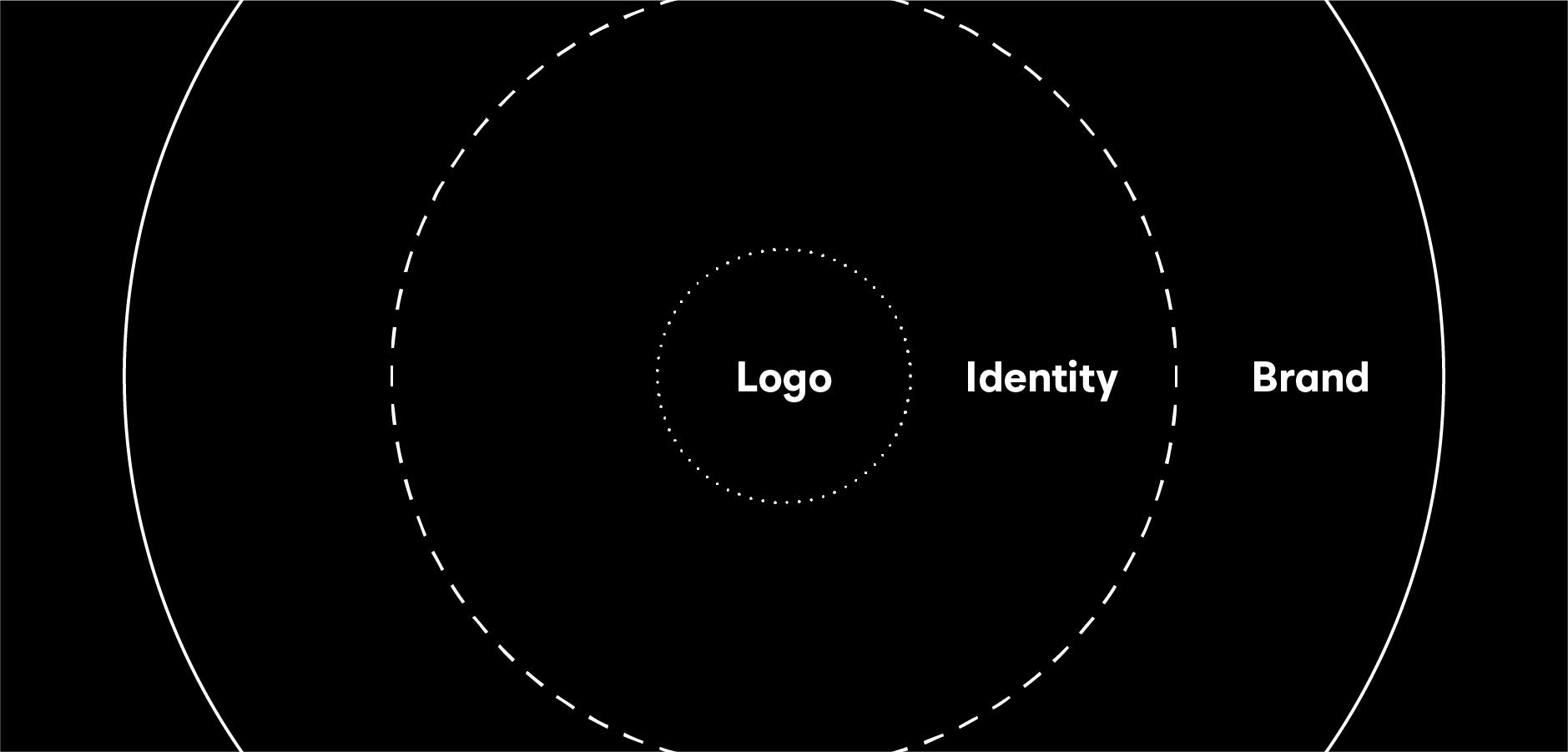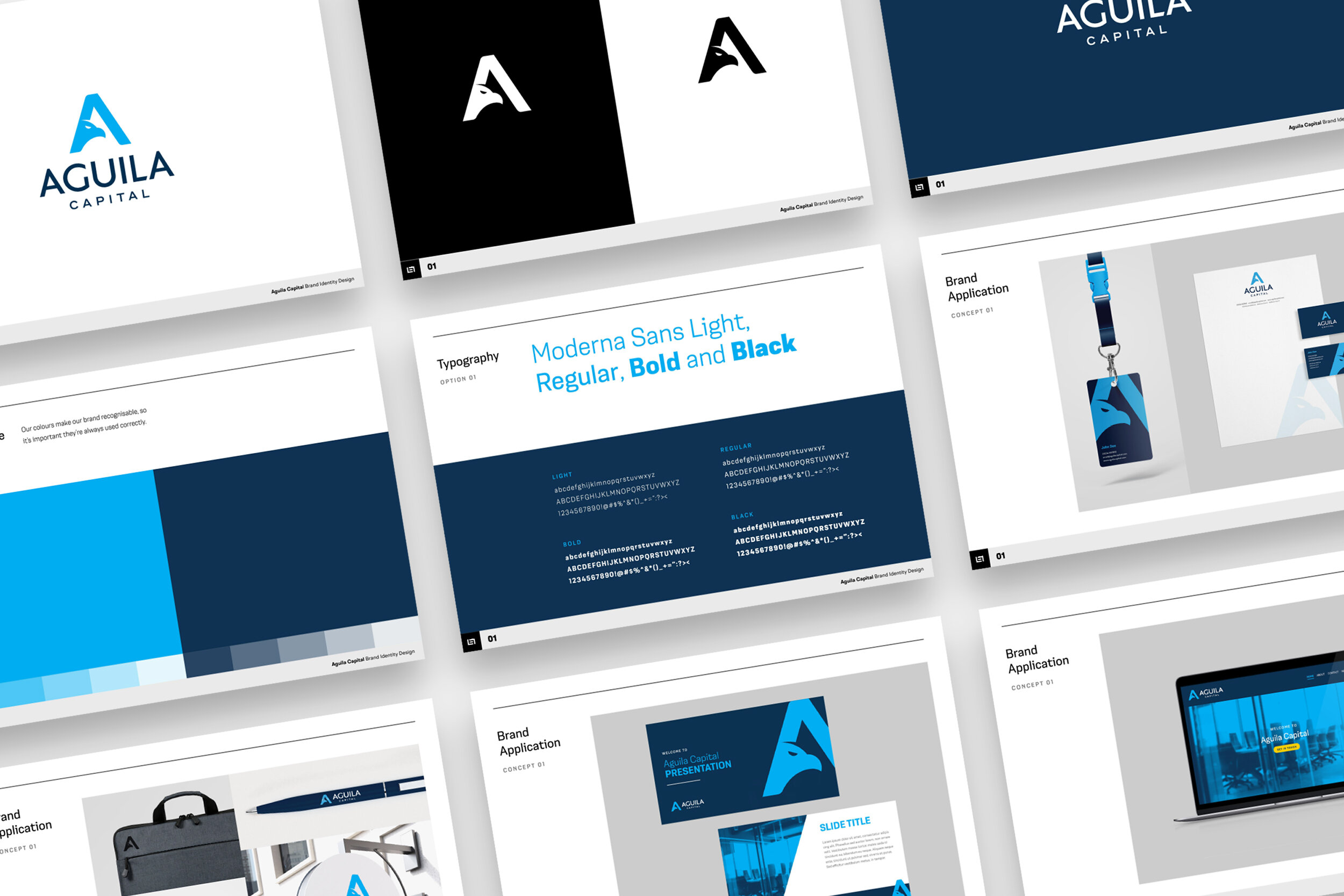Branding; Visual Identity; Logos; Brand Strategy; Graphic Design; Corporate Identity. A lot of these terms are used interchangeably nowadays, but it’s important to understand the differences in what they mean to avoid any confusion in communication. It’s also important to understand what can be achieved through brand identity design, and what cannot. Some things are unfortunately out of the designers’ hands.
What is a brand?
Your brand is so much more than just a logo. It’s how others feel about your business and what they expect of you. It’s the outside perception of your business. Marty Neumeier gives a simple and concise definition of a brand in his book, The Brand Gap:
“A brand is a person's gut feeling about a product, service, or organisation. It’s not what you say it is; it’s what they say it is.”
Jeff Bezos also put it well:
“Your brand is what other people say about you when you’re not in the room.”
You can’t determine your brand but you can influence it in various ways, and identity design is certainly one of those. Other factors are your products themselves, customer service, brand values, messaging, and how people describe you. So your logo, website, packaging and every other touchpoint where people can encounter your business are simply just a piece of a much larger puzzle.
What is brand identity design?
Brand identity design is a combination of elements designed to represent a specific business or service. Often referred to as Corporate Identity, it can be anything your customer might see or use while engaging with your business – a logo, website, advertising, brochures, packaging, signage, illustration, social media, uniforms, vehicle liveries, mobile apps, business cards, shop fronts, even photography style and fonts.
The design of these various applications should not only appeal to your target market, it’s also vital to reflect the quality and values of your service or product. If it doesn’t, there’s a difference between what your audience feels about your business and the perception you want them to have. Which ultimately means your brand doesn’t align with how you see your own business.
An initial brand identity design may not necessarily include the wide range of applications listed above, but it should set the tone and create a visual ‘system’ for these elements in the future. For example, an identity design project that sets these design foundations may include the logo, colour palette, typography, a brand pattern, and a graphic element/system with an example demonstrating how it can be applied to other brand collateral, e.g business stationery or signage.
All of this information is then collated and explained within a brand guidelines document (also referred to as a brand book/style guide). It ensures that anyone using the brand in the future is on the same page, and understands the correct fonts, colour palette, logo variations, and more.
What is a logo?
Your logo is the face of your business, and often the first impression people have of your brand. It’s a symbol, word-mark, emblem, icon, or combination of these, used to identify a company or service visually. It doesn’t need to explain what your business does, but instead be recognisable to identify.
For example, the Nike swoosh doesn’t tell you directly that they sell sports trainers and clothing. However, the simplicity and shape of the symbol is unique and recognisable, while also hinting at the idea of speed and motion.
That’s the goal of the logo – a visual element used to identify your business. And if designed strategically, it’ll appeal to your target market, give a desired impression to this market, and be unique enough to stand out amongst competitors.
Why should you invest in brand identity design?
Having a recognisable and consistent brand identity on every touch-point builds trust and brand awareness, differentiates you from your competitors, feels professional and relatable, encourages consumer loyalty, and as a result, gets you closer to achieving your goals and moving your business forwards. It may be time to consider investing in brand identity design if any of the following apply to your business:
You’re launching a new business and require a brand identity to impress potential clients & investors from the get go.
You’re envious of how your competitors look and need to regain the edge.
Your business has transformed or changed direction, and your brand identity no longer reflects what you do.
Your existing identity is attracting the wrong kind of customer, prompting you to realign your brand with your target market.
What is included in brand identity design?
The purpose of an identity design project is to set the foundations for how your brand looks and feels on different touch-points. There are endless possibilities to apply your brand to various assets, but to achieve the main goal of building the cornerstone of the brand, the following deliverables are a good place to start:
Brand identity system
Logo design
Typography
Colour palette
Brand patterns
Brand guidelines
What’s the brand identity design process?
If you’re looking to understand more about the process of designing a brand identity, I’ve outlined the 5 steps I take from starting the project to launching your new identity to the world:



